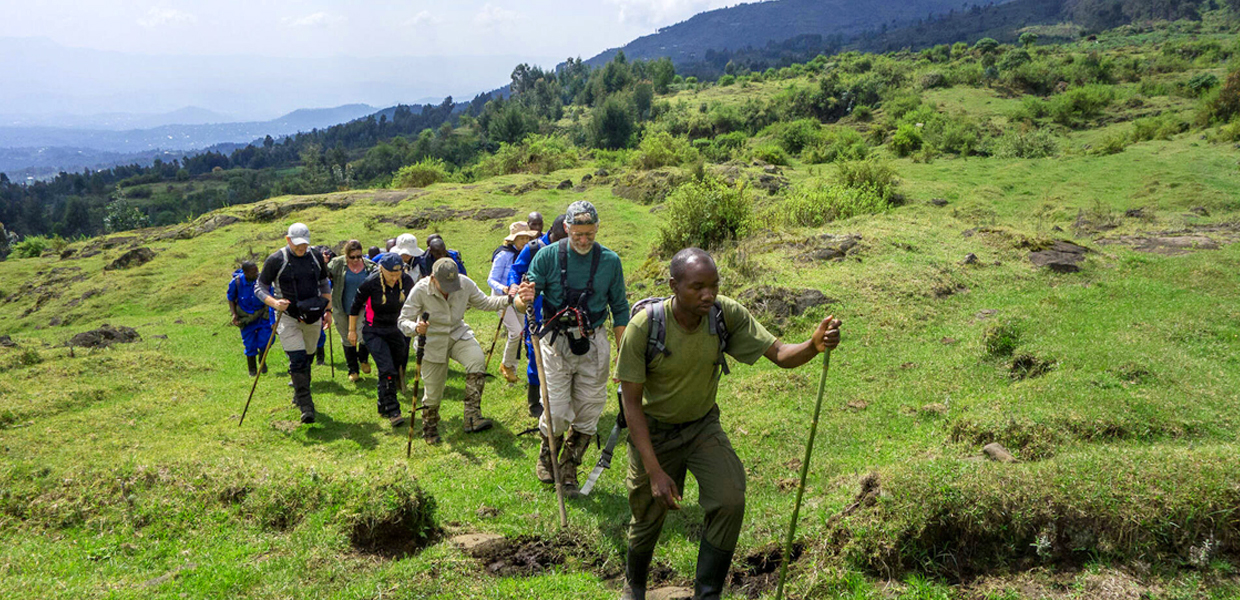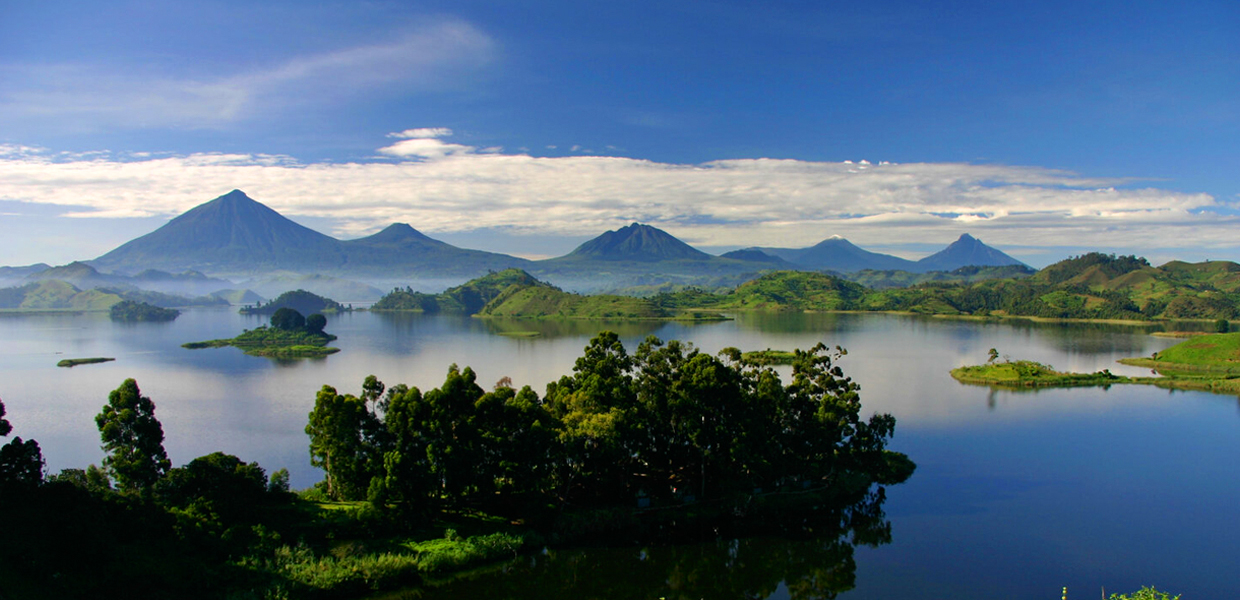
Mount Bisoke in Volcanoes National Park is one of the 8 Volcanoes that make up the Virunga massif and it sits on the Democratic Republic of Congo and Rwanda Border, although the largest part and the summit is within the latter. Also referred as Mount ‘Visoke’, it is an active Volcano towering at about 12,175 feet above sea level. This Stratovolcano last erupted in August 1957 thus creating a huge Crater Lake (in fact it is one of the largest Crater Lakes in the Virunga massif) and this joined the already existing Lake Ngezi before the peak.
Mount Bisoke in Volcanoes National Park is one of the 8 Volcanoes that make up the Virunga massif and it sits on the Democratic Republic of Congo and Rwanda Border, although the largest part and the summit is within the latter. Also referred as Mount ‘Visoke’, it is an active Volcano towering at about 12,175 feet above sea level. This Stratovolcano last erupted in August 1957 thus creating a huge Crater Lake (in fact it is one of the largest Crater Lakes in the Virunga massif) and this joined the already existing Lake Ngezi before the peak.
Send Enquiry For This Experience
How Mount Bisoke Hiking is done?
Hiking the Bisoke Mountain in Rwanda takes just a day, a matter of fact it takes just 6 hours-4 hours for ascent and 2 hours for descent but physical fitness is still required to have less challenging hikes and unforgettable experiences. However, sometimes the hike takes longer, especially during wet months and also depends on the pace of the slowest person. Expect muddy and slippery trails during the rainy season, in addition to dense vegetation, stinging nettles and thorny plants.
Before taking on Mount Bisoke, hikers are expected to gather at the Park Headquarters for briefing on the dos and don’ts of the hike as well as what to expect. Briefing starts at 7:00am, like it is with all Volcanoes National Park activities and you shouldn’t forget a valid passport and hiking permit. Having completed briefing and registration, climbers are asked whether they need to use the washrooms (remember there are no toilets in the middle of the forest) and later offered walking sticks then hop into their safari vehicle for a transfer to the trailhead. There is an opportunity of hiring porter (at $10 to $20 per porter) to offer support during hiking or carry your backpack.
It takes about 20 to 30 minutes to get to the trailhead, owing to the bad nature of roads and afterwards, follow the lead of the Ranger guide and armed Ranger who will be protecting you from stray animals especially buffaloes and others. Get the chance to see Dian Fossey’s Research Center between Karisimbi and Bisoke Volcanoes.
Send Enquiry For This Experience
What to expect while hiking Bisoke Mountain?
One of the most thrilling things to see during the Mount Bisoke Hike is the two spectacular Craters, one close to the summit as the other on the summit. Also expect lots of wildlife species that include the endangered mountain gorillas, bushbucks, forest buffaloes, golden monkeys, forest elephants, giant forest hogs as well as lots of bird species. However, because this is a mountain hiking adventure, less time will be spent with the mountain gorillas and golden monkeys once encountered, usually about 10 minutes without photography. When you get to the peak, expect to take in views of surrounding Virunga Volcanoes especially Nyiragongo, Gahinga, Karisimbi, Muhabura and Sabyinyo.
After enjoying photography and picnic on the peak, descend back to the trailhead where you will meet your private driver for a transfer back to the Lodge or continue with other planned activities.
How much does it cost to hike Bisoke Mountain in Rwanda?
It costs only $75 per person to hike the Bisoke Mountain in Rwanda, and only includes Ranger fees. It doesn’t include Park entry fees, porter fees, gratuities and transportation. The permits can be booked in advanced or on the actual day of hiking but we recommend the latter because it allows enough time to plan. For this reason, it is advisable to book at least 6 months in advance.
When is the best time to hike the Bisoke Mountain in Rwanda?
The Bisoke Mountain hike in Rwanda is very busy during the dry season (December to February and June to September) because chances of experiencing heavy downpours during hiking are minimal (but inevitable) thus trails are likely to be drier, not muddy or slippery. This isn’t the case with rainy season (March to May and October to November) when rains are experienced almost everyday hence making trails muddy and slippery. However, don’t be surprised when it rains in a dry season and this is because of high altitude, dense vegetation and many other factors.
Send Enquiry For This Experience
Recommended gear for hiking the Bisoke Mountain in Rwanda
For your Mountain Bisoke Hike, don’t forget to bring; Rainproof outer layers as well as extra layers for warmth, sunglasses, sunscreen, sturdy hiking boots with good ankle support as well as treaded sole, safari hat, long cotton socks, comfortable safari trouser, a long sleeved shirt, gardening gloves for protecting hands while you hold onto tree branches and leaves for support while hiking, energy giving snacks and enough drinking water, re-usable water bottle, waterproof backpack, a good camera, first aid kit, binoculars, insect repellant, toiletries and so much more.
Besides Bisoke, other Mountains that can be hiked in Rwanda are mount Karisimbi, Muhabura, Sabyinyo and Gahinga. While hiking the mountains might be your priority, there are chances of enjoying other adventures in the country that include gorilla tracking, chimpanzee tracking, bird watching, cultural tours, game safaris, golden monkey tracking, forest/bush walks, boat rides, canopy walks, visiting the Dian Fossey gravesite and so much more.



